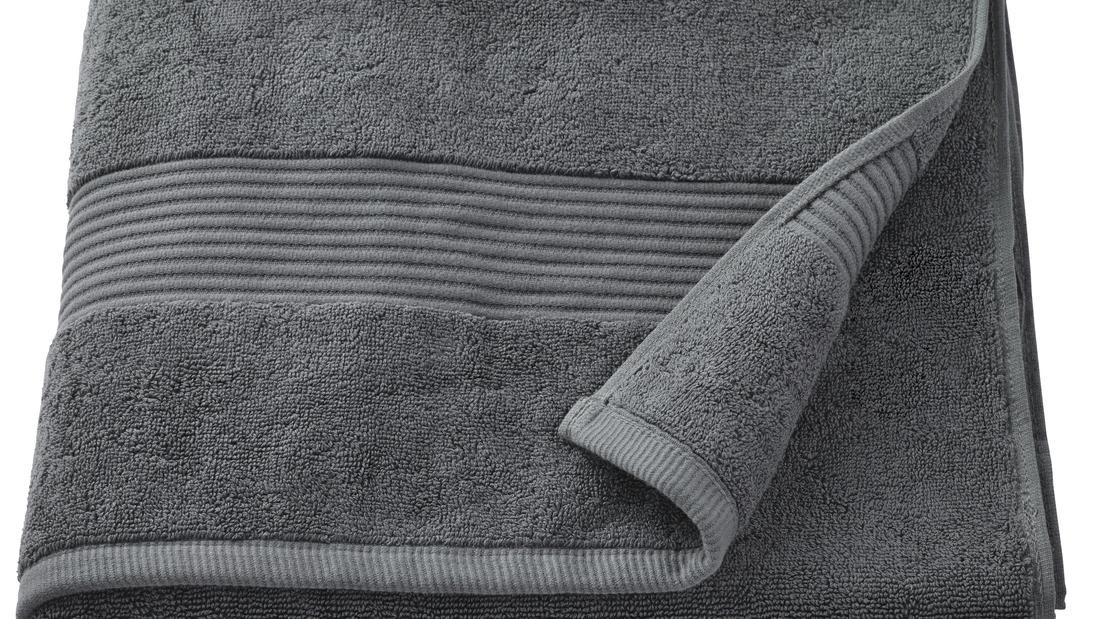Towels are one of the most frequently used bathroom items. However, because they often come into contact with water and dirt, towels are prone to becoming dirty and developing unpleasant odors. Dirty towels not only disrupt comfort but can also become breeding grounds for bacteria and germs that may pose health risks.
Therefore, it's important to maintain the cleanliness of towels, especially those that are frequently used. Regular and proper washing will help remove dirt, bacteria, and bad odors while keeping the towels soft and comfortable to use.
We will provide a complete guide on how to wash towels that quickly become dirty, along with tips to prevent towels from becoming dirty. By following this guide, you can ensure that your towels are always clean, hygienic, and comfortable to use.
Also read: A cosy and small spa bathroom
Effective steps to wash dirty towels
Here are the steps to wash dirty towels with more detailed explanations:
1. Separate towels by color
Before starting the washing process, it is very important to separate the towels by color. Separate white towels from colored ones. This is to prevent color bleeding from the colored towels onto the white towels. Additionally, separating towels by color can help maintain the brightness and prevent dullness.
If you wash dark-colored towels with white towels, the dark colors may bleed and leave stains on the white towels. These stains are difficult to remove and can ruin the appearance of your white towels. Therefore, always take a moment to separate towels by color before washing them.
2. Soak towels in warm water
Soaking dirty towels in warm water is an effective first step to remove dirt and stubborn stains. Prepare a bucket or basin filled with warm water, then add a sufficient amount of detergent.
Make sure the detergent dissolves well in the water before you immerse the towels. Soak the towels for 30 minutes to 1 hour, depending on the level of dirtiness.
This soaking process will help loosen dirt, oil, and stains that cling to the towel fibers. Thus, the subsequent washing process will be more effective in lifting dirt and making the towels clean again.
3. Wash towels with a washing machine
After soaking, transfer the towels to the washing machine. Use a gentle detergent that doesn't contain bleach, especially for colored towels. Choose a normal or heavy-duty washing cycle, depending on the level of dirtiness. If the towels are very dirty, you can select the heavy-duty cycle to ensure all dirt is lifted.
Don't overload the washing machine with too many towels. Ensure there is enough space for the towels to move freely during the washing process. This will help the detergent work more effectively and ensure all parts of the towels are thoroughly cleaned.
4. Use hot water
Hot water is very effective in killing bacteria and germs that may be present on the towels. Use hot water with a minimum temperature of 60 degrees Celsius to wash towels.
However, before doing so, make sure your towels are resistant to hot water. Check the care label on the towels to know the maximum recommended temperature.
If your towels are not resistant to hot water, you can use warm water with a temperature of around 40-50 degrees Celsius. Although not as effective as hot water, warm water can still help kill some bacteria and germs.
5. Rinse towels thoroughly
After the washing process is complete, rinse the towels with clean water until no detergent residue remains. Detergent residue can make towels feel stiff, rough, and uncomfortable to use. Additionally, detergent residue can also cause skin irritation for some people.
Make sure to rinse the towels thoroughly until the rinse water is clear and free of suds. You can also add a little white vinegar to the final rinse water to help remove detergent residue and make the towels softer.
6. Dry towels immediately
After washing, immediately dry the towels by hanging them in direct sunlight or using a dryer. Sunlight not only helps dry the towels but also has natural antibacterial properties that can kill germs and bacteria.
If you're using a dryer, make sure to set the temperature according to the type of towel material. Avoid over-drying the towels, as it can cause them to shrink or become damaged.
7. Avoid excessive use of fabric softener
Although fabric softener can make towels feel softer, using it excessively can reduce the towel's absorbency and make them feel slippery. Use fabric softener sparingly or opt for natural alternatives like white vinegar. White vinegar can help soften towel fibers and eliminate bad odors.
Moreover, avoid using chlorine bleach on colored towels, as it can cause the colors to fade. If you need to remove stubborn stains, use oxygen bleach, which is safer for colors.
Also read: 3 ways to make your bathroom work for all ages
IKEA towel recommendations for washing and caring for towels






